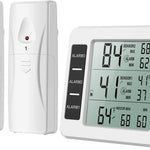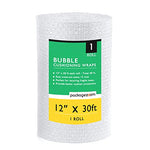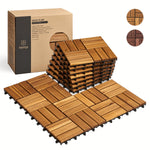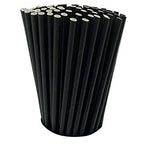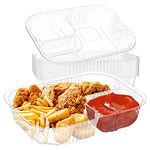You have no items in your shopping cart.
When it comes to food preparation and handling, safety and hygiene are paramount. In the culinary world, using the right tools and equipment can make all the difference in preventing contamination and ensuring the well-being of both consumers and food handlers. Among these tools, food safe gloves play a crucial role. In this article, we will delve into the world of food safe gloves, exploring their importance, types, best practices, and frequently asked questions.
Food Safe Gloves: An Essential Protective Barrier
Food safe gloves are an indispensable asset in any kitchen or food-related environment. They act as a protective barrier between the hands of the food handlers and the edibles they prepare or serve. These gloves are specially designed to meet hygiene standards and reduce the risk of cross-contamination, making them an invaluable asset for ensuring the safety of both the consumers and the employees.
Types of Food Safe Gloves
There are various types of food safe gloves available, each tailored to specific needs and preferences. Some of the most common types include:
-
Latex Gloves: Latex gloves are a popular choice due to their exceptional elasticity and comfort. They provide a snug fit, offering excellent dexterity and tactile sensitivity.
-
Vinyl Gloves: Vinyl gloves are a cost-effective option and are ideal for short-term use. However, they might not offer the same level of durability as other materials.
-
Nitrile Gloves: Nitrile gloves are known for their superior puncture resistance and are suitable for individuals with latex allergies.
-
Polyethylene Gloves: These gloves are commonly used for food preparation tasks that require frequent glove changes. They are lightweight, economical, and disposable.
-
Neoprene Gloves: Neoprene gloves are resistant to chemicals and can withstand higher temperatures, making them suitable for certain food handling tasks.
Benefits of Using Food Safe Gloves
Using food safe gloves goes beyond adhering to regulations; it offers a multitude of benefits for both consumers and food handlers. Some key advantages include:
-
Reduced Cross-Contamination: Food safe gloves act as a protective barrier, preventing the transfer of harmful bacteria and allergens from hands to food.
-
Enhanced Food Safety: By minimizing direct contact with food, the risk of contaminating the edibles is significantly reduced, leading to safer culinary experiences.
-
Latex Allergy Prevention: Non-latex glove options, such as nitrile and vinyl gloves, cater to individuals with latex allergies, promoting inclusivity in the workplace.
-
Improved Hand Hygiene: Food safe gloves are not a substitute for handwashing, but they do encourage better hand hygiene practices among food handlers.
-
Regulatory Compliance: Adhering to food safety regulations is essential for any food establishment, and using food safe gloves is a step towards meeting those standards.
Best Practices for Using Food Safe Gloves
To maximize the benefits of food safe gloves, it is crucial to follow best practices in their usage. Here are some essential guidelines:
-
Proper Glove Selection: Choose the appropriate type and size of gloves to ensure a comfortable fit and ease of movement during food preparation tasks.
-
Hand Hygiene: Before putting on gloves, thoroughly wash and dry hands to eliminate potential contaminants.
-
Glove Application: When donning gloves, avoid touching the outer surface, as it may be contaminated. Instead, use the cuff to avoid skin contact.
-
Regular Changes: Change gloves regularly, especially when switching between tasks or handling different food items.
-
Avoiding Cross-Contamination: Never use the same gloves for handling raw and ready-to-eat foods, as this could lead to cross-contamination.
-
Glove Removal: When removing gloves, peel them off from the wrist to inside-out, ensuring minimal contact with the skin.
-
Washing and Reusing Gloves: While some gloves are labeled as single-use, others can be washed and reused according to the manufacturer's instructions.
Frequently Asked Questions (FAQs)
-
Q: Can food safe gloves be used with all types of food? A: Yes, food safe gloves can be used with all types of food. They are designed to provide a barrier between the hands and the food, preventing contamination.
-
Q: Are nitrile gloves a suitable alternative for individuals with latex allergies? A: Yes, nitrile gloves are an excellent alternative for those with latex allergies, as they are latex-free and hypoallergenic.
-
Q: Can I wash and reuse disposable food safe gloves? A: It is not recommended to wash and reuse disposable gloves, as they are designed for single-use only. Reusing them might compromise their integrity.
-
Q: What should I do if I have sensitive skin and experience irritation from wearing gloves? A: If you have sensitive skin and experience irritation, consider using hypoallergenic gloves or consult a dermatologist for suitable alternatives.
-
Q: Can food safe gloves be used in food processing industries? A: Yes, food safe gloves are widely used in food processing industries to maintain hygiene and safety standards during various production processes.
-
Q: Are vinyl gloves resistant to chemicals? A: While vinyl gloves offer basic protection, they are not as resistant to chemicals as nitrile or neoprene gloves.
Conclusion
In conclusion, food safe gloves are an essential tool in maintaining safety and hygiene standards in the culinary world. These gloves provide a protective barrier, reducing the risk of cross-contamination and promoting food safety. By following best practices in their usage and adhering to food safety regulations, food handlers can ensure the well-being of consumers and foster a healthier environment in the kitchen. Whether you're a professional chef or a home cook, incorporating food safe gloves into your food handling routine can make a significant difference in the overall culinary experience.


